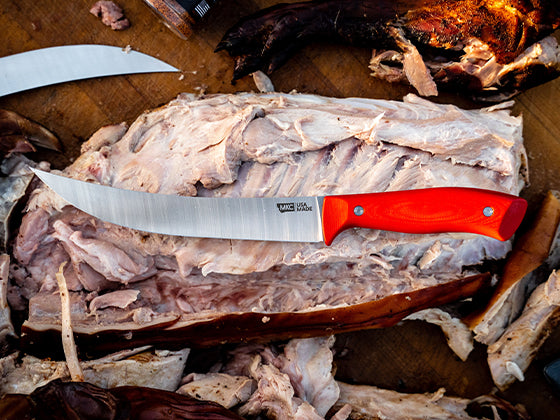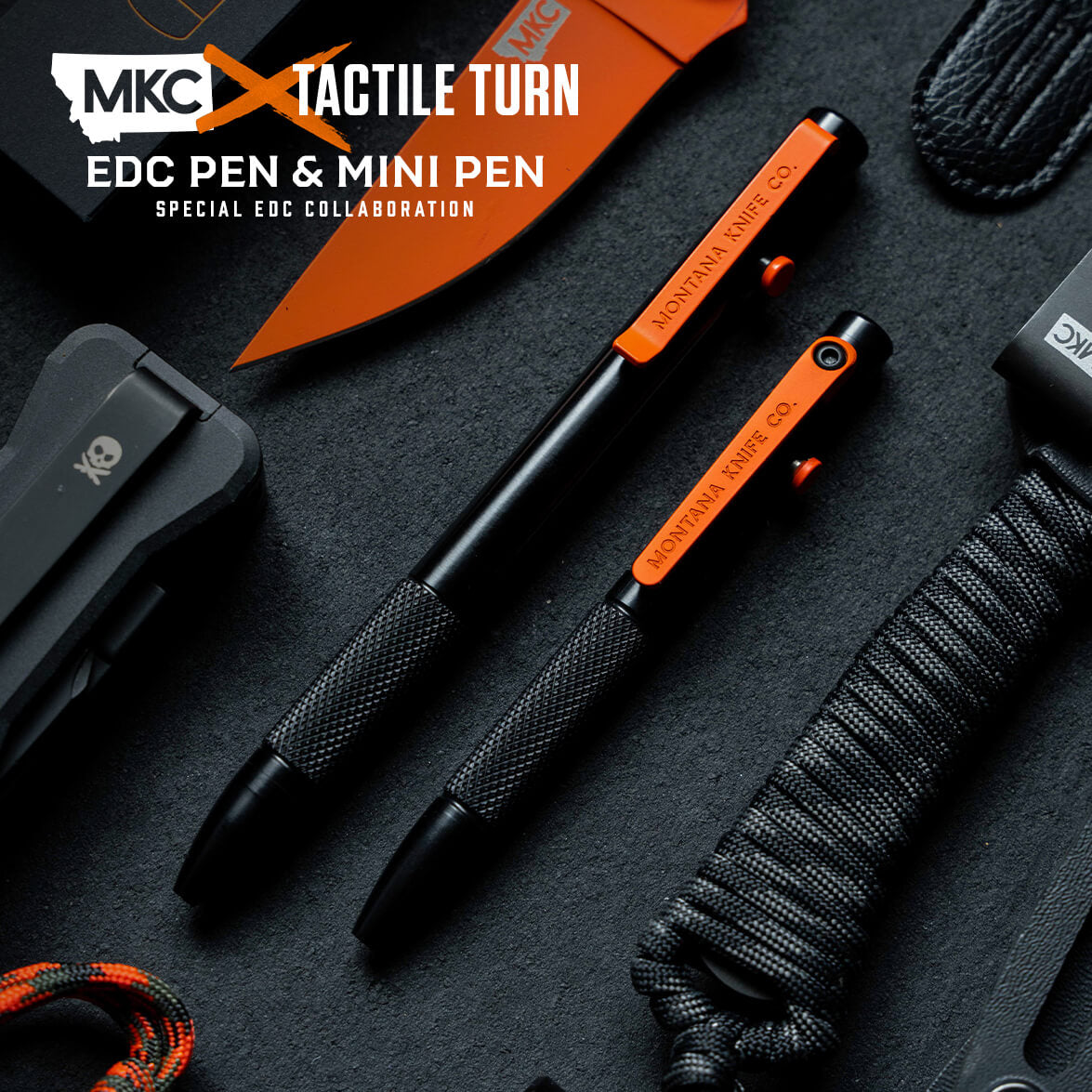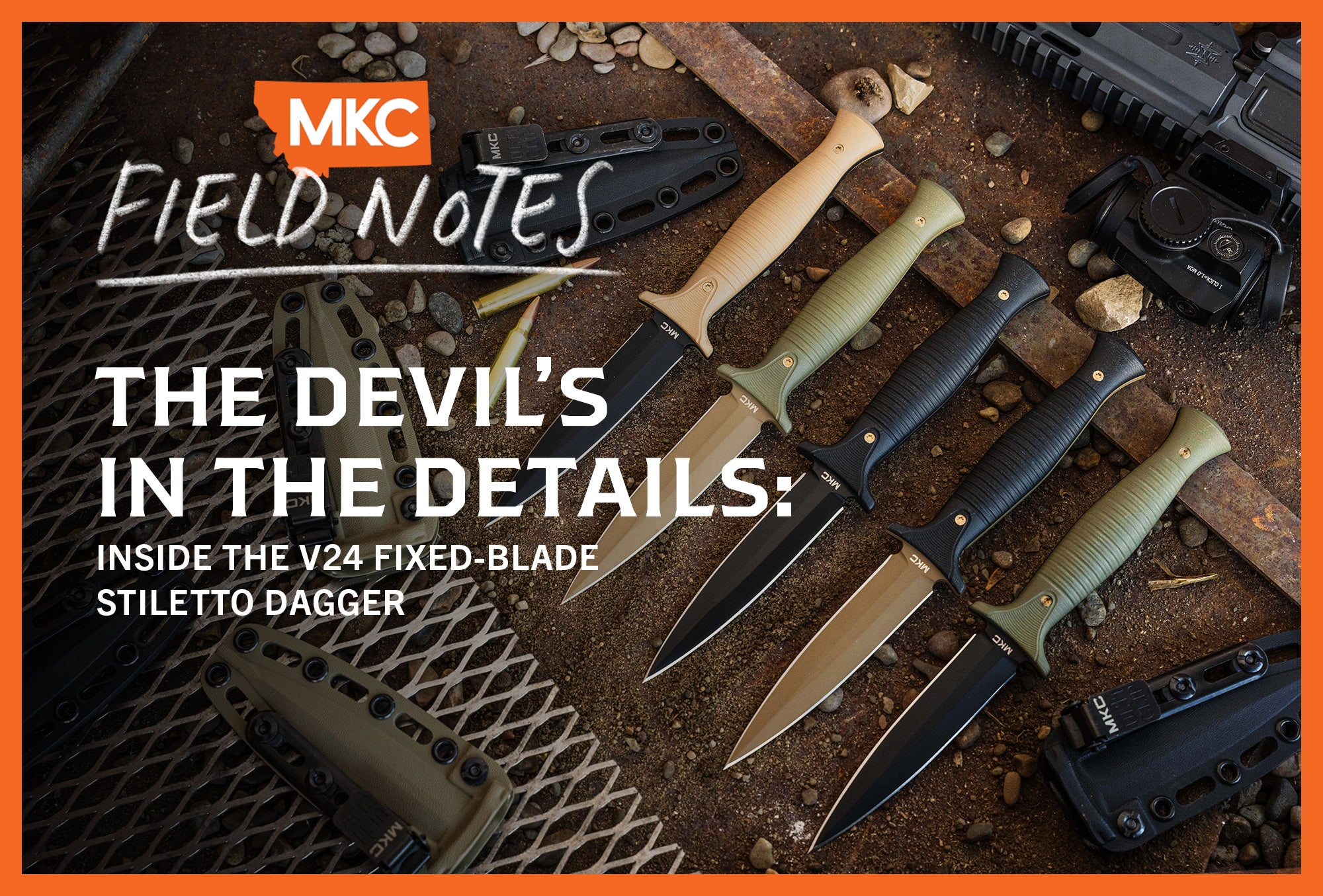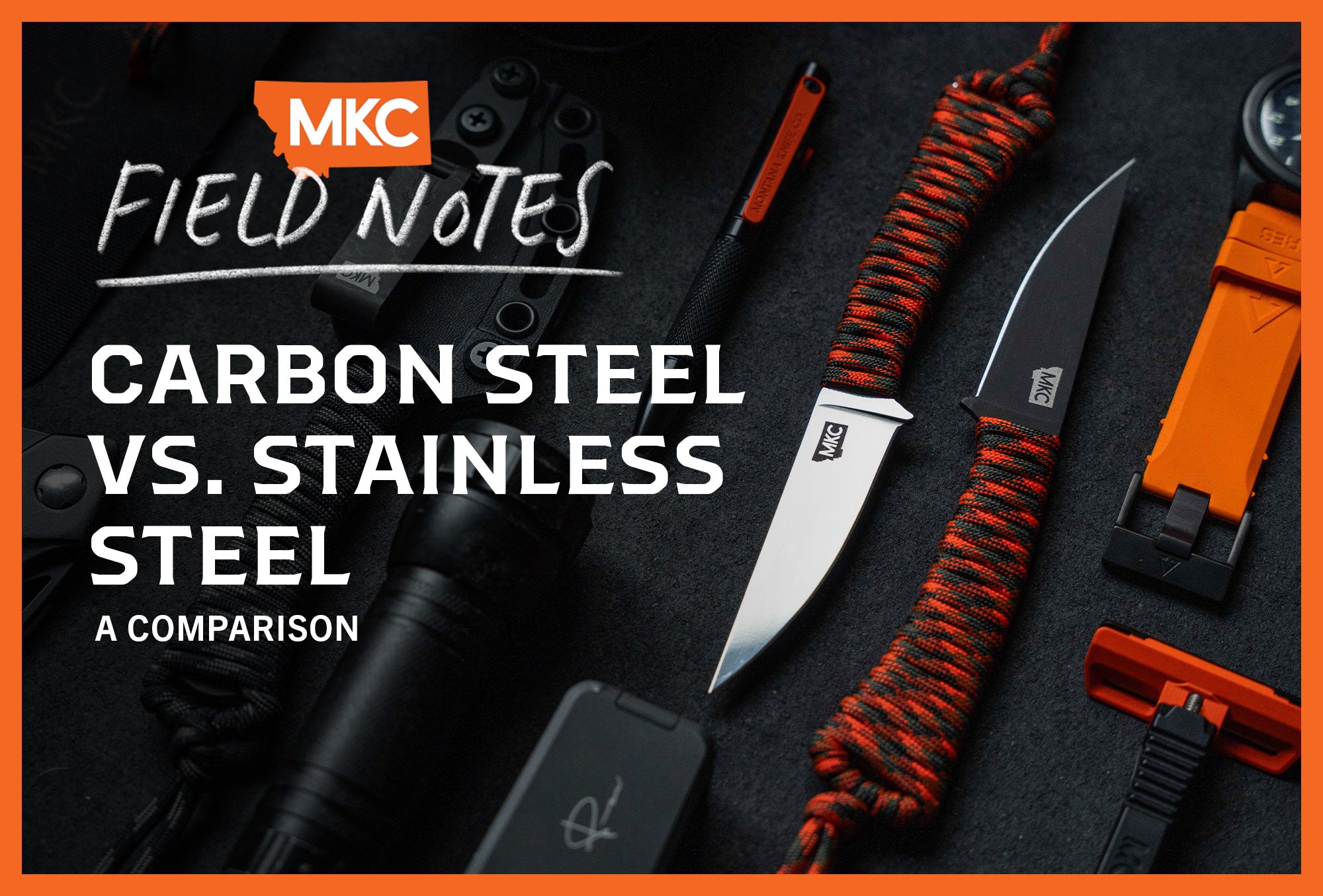Organizing a hunting trip takes a lot of planning. A good hunting knife should always be at the top of your packing list.
What makes a good hunting knife? How do you choose the best fit for your next adventure?
In this post, we’ll discuss the features to look for and how to choose the hunting knife that’s best for you.
A Good Hunting Knife...
Doubles as a Survival Knife
When choosing a good hunting knife, think about the type of hunting you’ll do. Are you hunting small game close to home or bigger, more dangerous prey deep in state lands? Is there a chance you’ll need your blade for survival?
Experienced hunters know how quickly a hunting trip can become a life-or-death scenario. Whether you pack a tiny survival knife or a full-size hunting blade, any knife is better than none in a survival situation. The best hunting knives do double duty when situations get dicey.
Is Appropriate for the Type of Hunt
Another determiner of what makes a good hunting knife is how well it fits your needs for this trip. What animal are you aiming to catch? What kinds of situations might arise when going after that animal? What tasks will you need the knife for after a successful kill, and will it need to perform any other tasks in the meantime?
For example, you might choose a different knife for tree stand hunting than you would for ground-level hunting. For a hike deep into the mountains, you might bring different supplies than you would if your vehicle or cabin was close by.
If you’re planning a multi-day trip, you may need more and different blades than for a day-long expedition. Will your knife need to do some work, like feathering wood to start a fire?
MKC’s Speedgoat and Blackfoot make good hunting knives because they can handle big jobs. The other day, I received a picture from a young lady who shot a giant Alaskan Yukon moose and broke it down with the Blackfoot.
If I were preparing for a trip through the Alaskan Yukon, I’d bring a Blackfoot or Speedgoat with me. I’d also bring a Super Cub or a Stonewall Skinner. Survival is always a concern in the Alaskan wilderness, especially if I’m waiting on a bush plane to pick me up in 10 days.
I want a knife to help me on the hunt and do heavy work like batoning wood. It’s never a bad idea to have a second knife on big trips to handle various tasks — and as a backup in case you lose one. The old saying “two is one and one is none” applies here.
Too many people end up trapped in the field for a week or more, waiting on a plane that can’t get there because of bad weather. The Stonewall Skinner and Super Cub are great for large animals and are dependable in survival situations.
Is Durable and Weather-Resistant
Hunting knives come in all shapes, sizes, and functions. On one end, you have disposable knives, which work best for single-use situations. Because they’re single-use, you can swap out the blade when it dulls instead of sharpening it.
On the other side of the spectrum, you have knives like those we make here at MKC. We design and build our knives to last through multiple generations of use. They require more upkeep and a greater initial investment than disposable knives. However, you can depend on them to be sharp and capable for years to come.
Hunting knives come in stainless and carbon steel. Both types have benefits and drawbacks that affect your experience out in the field.
Stainless steel knives are widely considered the more durable option. Stainless steel resists corrosion better than carbon steel and holds an edge better, too. It can be tougher to sharpen, and the edge doesn’t get as razor-sharp as carbon steel.
Many hunters prefer the mirror finish that well-cared-for stainless steel knives have. However, stainless steel knives are also more expensive than carbon steel knives. They’re more heat-resistant, so stainless steel is the superior choice if you plan to use your blade around or in the fire.
Carbon steel knives require more care and upkeep than their stainless counterparts. They dull a little faster, but you can compensate for that by keeping a sharpening stone in your kit.
High carbon content makes a knife more brittle, which translates to more sharpness. Carbon steel knives have varying levels of carbon content.
Carbon steel knives are easier to forge and cheaper to craft, meaning many inexpensive knives you’ll see for sale are carbon steel. They corrode faster than stainless steel knives, so take care to wash, clean, and dry them after use.
Modern knife treatments like Parkerization and Cerakoting protect carbon steel knives. While they won’t prevent corrosion forever, they keep your knife easy to clean and offer an attractive finish.
What Doesn’t Make a Good Hunting Knife?
Your hunting knife shouldn’t have a serrated edge. Those are worthless in the field.
I’m also not a fan of gut hooks, although I know many people who use them. Gut hooks are just another way to snag yourself or your gear.
If a hunting knife can’t hold an edge, it should at least be easy to resharpen in the field. Unfortunately, too many of the blades on shelves are flat-out dull.
Plus, if a knife’s already dull in the store, it probably won’t sharpen well at home. A dull knife is just a waste of money.
Finally, a feature many overlook when shopping for hunting knives is the sheath quality. If you’re buying a knife in a store, you’re likely buying it before you’ve even seen the sheath. It may not work with your gear or be flimsy, loose, or hard to keep clean.
What Makes a Good Hunting Knife?
A good hunting knife can gut and skin an animal and cape one out. For example, the MKC Stonewall Skinner has enough of a tip to cape successfully.
A good hunting knife has a functional tip. While Wharncliffes and Sheepsfoots are great knives, they don’t make good primary hunting blades because of their unusual tips. A knife with a good drop point or even a straight blade, like the Speedgoat, works better on hunting knives.
A good hunting knife has a fixed blade, ergonomic handle, and comfortable grip. It shouldn’t be too large, especially if you plan on carrying it frequently and don’t want to add unnecessary weight or lose control of the blade.
The trick is to find a knife that’s not too heavy, bulky, or long, but large enough for tough jobs. It should handle working inside the body cavity while lending good control to the user.
Inexperienced hunters shouldn’t use a knife longer than a Super Cub. Control is always more important than size.
A good hunting knife is accessible, secure, and easy to carry. You don’t want to fall down a ravine, land on your pack, and have your blade rip right through it. A good Kydex knife sheath lets you store your blade safely at your hip or on your pack’s straps.
A good hunting knife holds a sharp edge during the hunt. Here at MKC, we design our knives with proven edge geometry, allowing you to sharpen them anywhere, even on the go. Consider carrying a small sharpening stone in your pack to maintain that edge in the field.
MKC knives are sharp out of the box, and you can resharpen them repeatedly. Our MKC Generations® program allows you to send your knife in for resharpening during the blade’s life.
A good hunting knife has a secure sheath. MKC designs its knives with sheaths that fit securely and attach to multiple accessible points.

A Good Hunting Knife Handles Any Situation
A knife is a tool. It’s only as useful as the hunter wielding it.
Far too often, we try to use knives for tasks they aren’t designed to handle. Unfortunately, that usually ends in disappointment or injury. By knowing what makes a good hunting knife, you can better guard yourself against these misplaced expectations.
After all, the more you learn about hunting knives and how best to use them, the better. A tool in a master’s hands can do wonderful things.
by Josh Smith, Master Bladesmith and Founder of Montana Knife Company







































